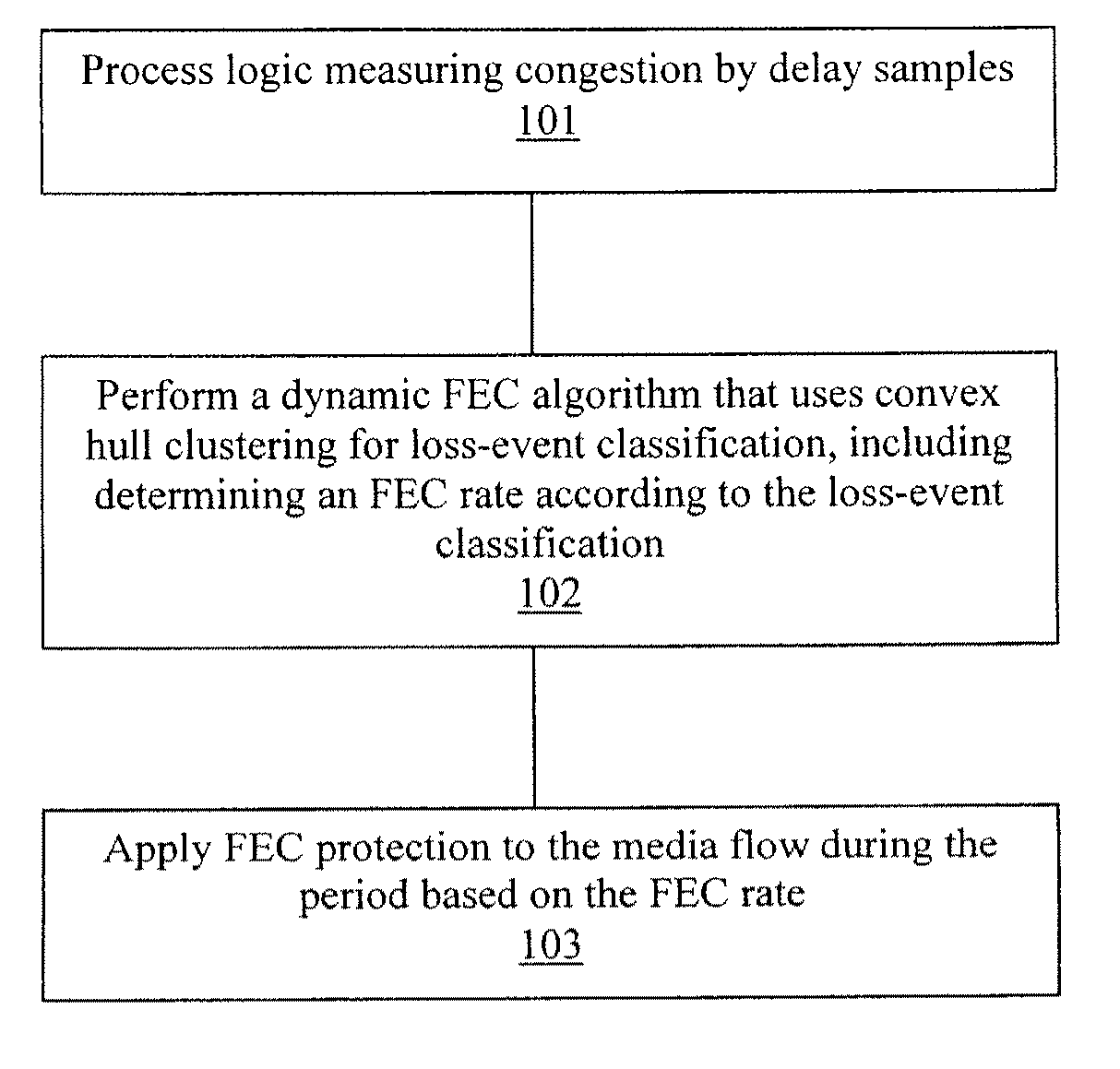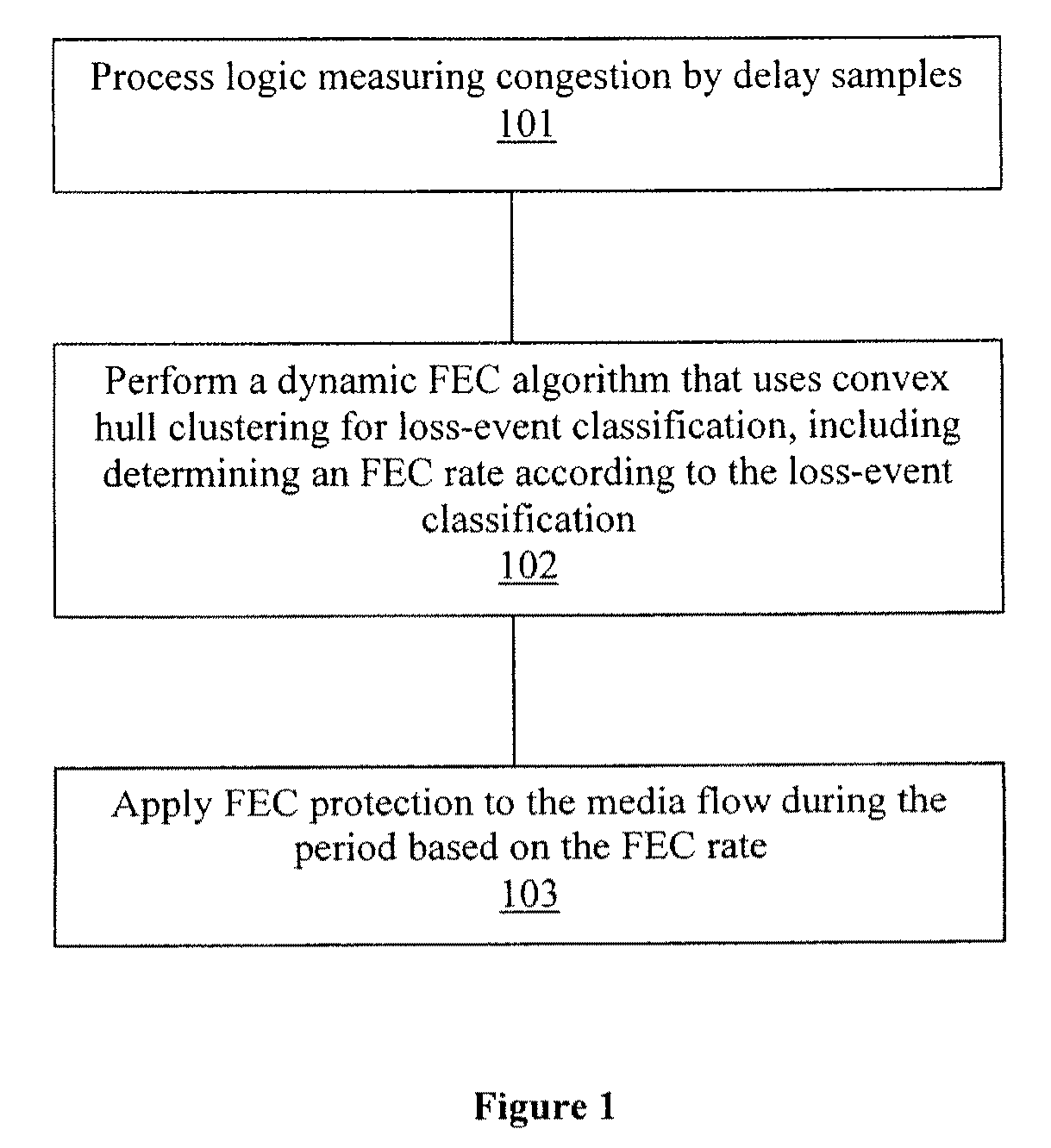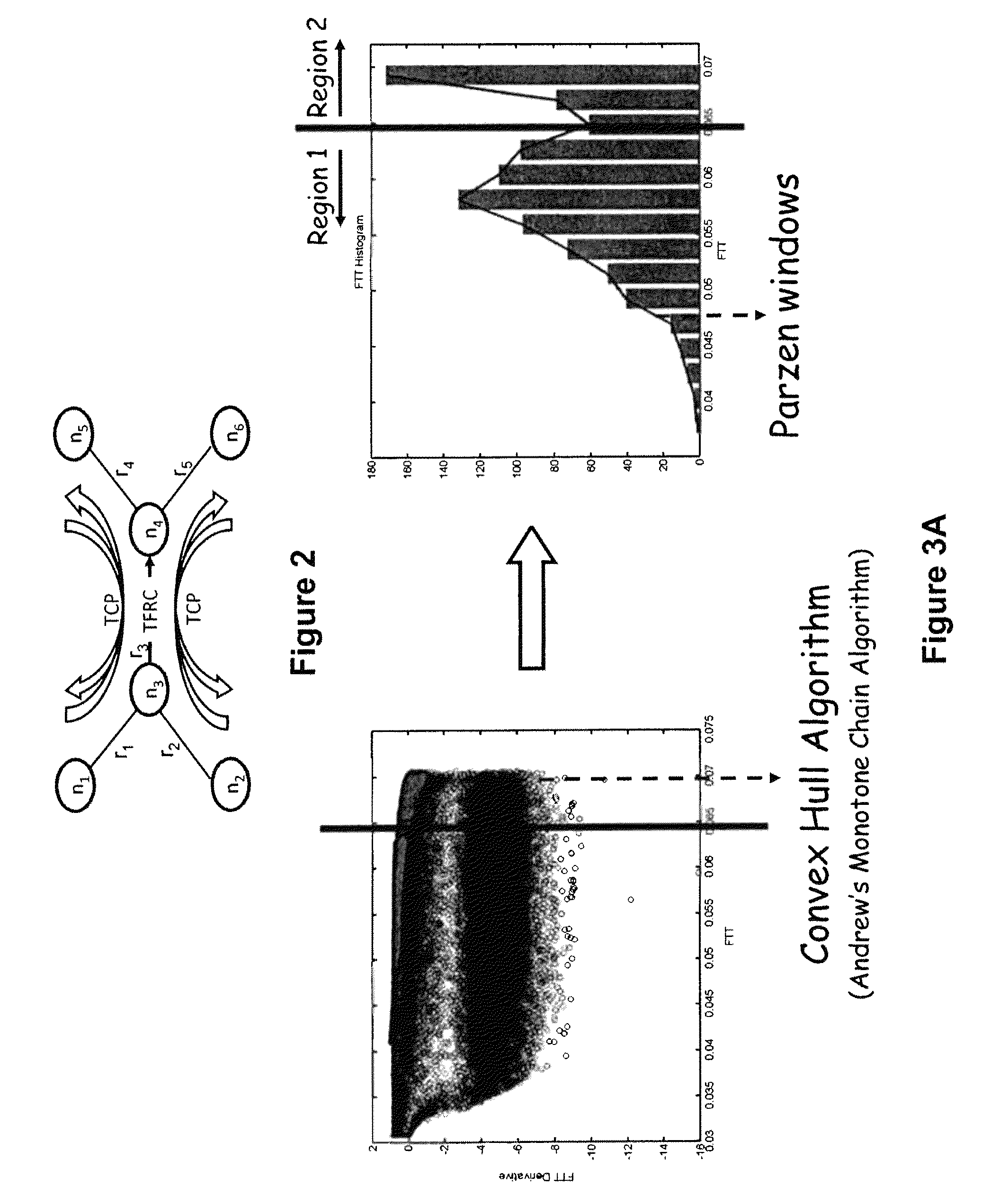Method and apparatus for reliable media transport
a reliable and media technology, applied in the field of media transport, can solve the problems of inability to conceal losses easily, packet loss for other flows, congestion to achieve rate adaptation,
- Summary
- Abstract
- Description
- Claims
- Application Information
AI Technical Summary
Benefits of technology
Problems solved by technology
Method used
Image
Examples
Embodiment Construction
[0019]In one embodiment, a low overhead, TCP-friendly algorithm utilizing FEC on unicast media flows is used to more effectively handle congestion-induced packet losses. In the following, two FEC-based reliable transport techniques are disclosed, one sender-based and the other receiver-based, that dynamically change the FEC rate based on modeling the congestion-induced packet losses. The modeling acts on the interdependencies between packet losses and the two-tuple that consists of RTT (or FTT) and its derivative R{dot over (T)}T (or F{dot over (T)}T). In one embodiment, these interdependencies are modeled by grouping the loss events as unions of convex hulls on a 2-D Euclidean space, where each loss event is associated with a two-tuple {RTT, R{dot over (T)}T} (or {FTT, F{dot over (T)}T}). The disclosed techniques can substantially reduce the overhead from FEC while achieving the same level of reliability a fixed-rate FEC would provide.
[0020]In one embodiment, the TCP Friendly Rate ...
PUM
 Login to View More
Login to View More Abstract
Description
Claims
Application Information
 Login to View More
Login to View More - R&D
- Intellectual Property
- Life Sciences
- Materials
- Tech Scout
- Unparalleled Data Quality
- Higher Quality Content
- 60% Fewer Hallucinations
Browse by: Latest US Patents, China's latest patents, Technical Efficacy Thesaurus, Application Domain, Technology Topic, Popular Technical Reports.
© 2025 PatSnap. All rights reserved.Legal|Privacy policy|Modern Slavery Act Transparency Statement|Sitemap|About US| Contact US: help@patsnap.com



